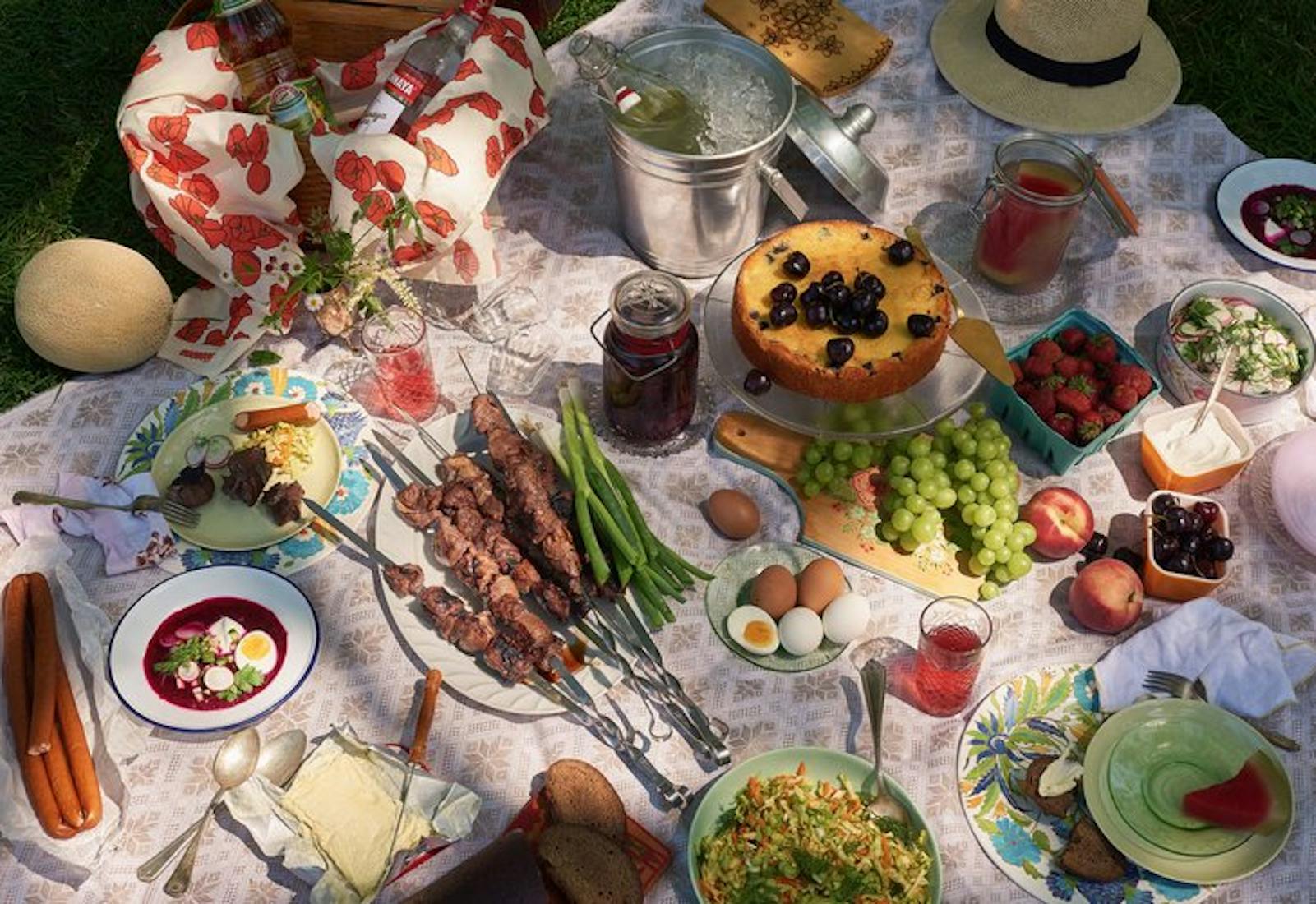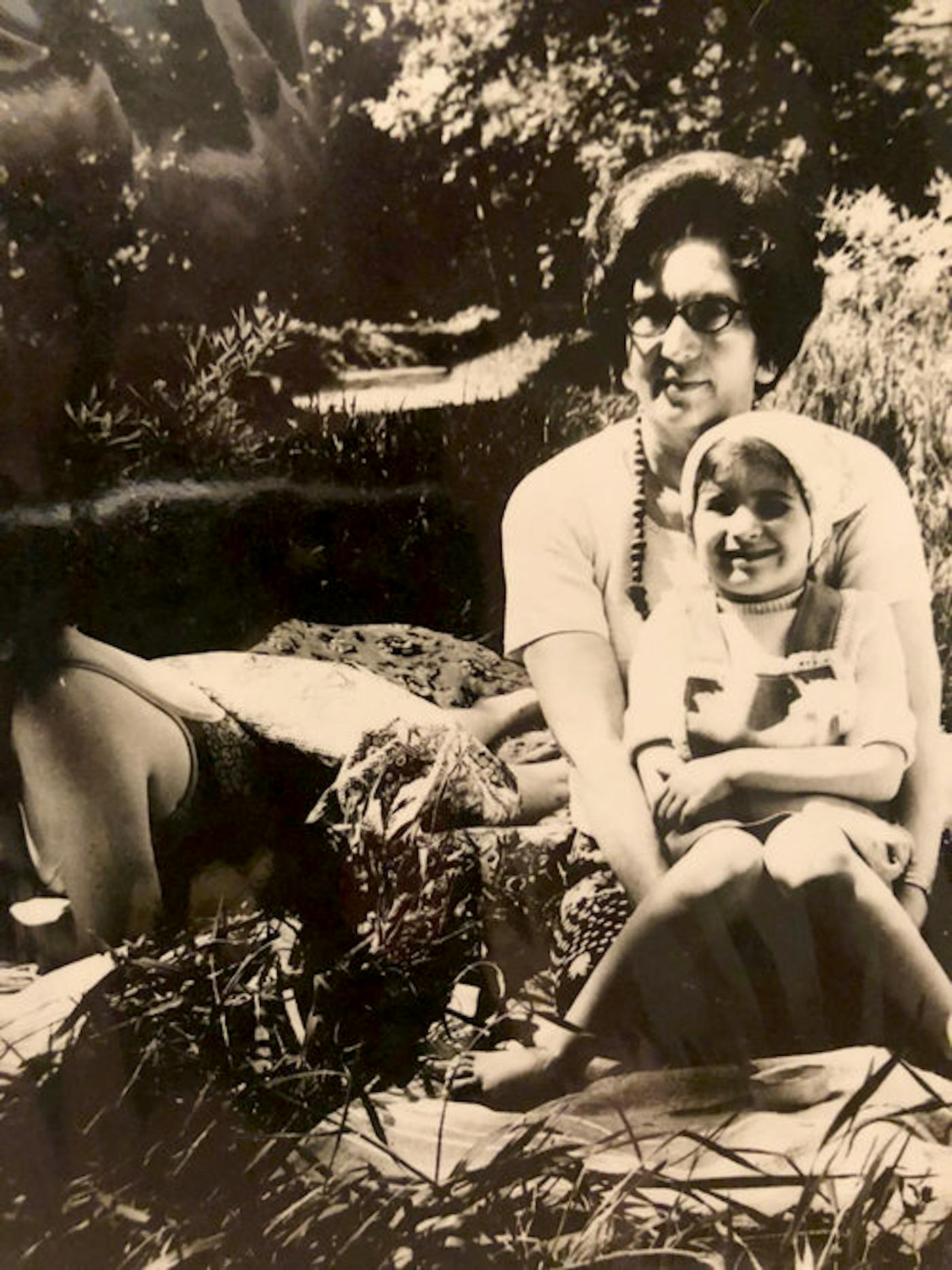Shared by Sasha Shor


Editor’s note: A few summers ago, we spent an afternoon in Brooklyn’s Prospect Park with Sasha Shor enjoying an elaborate Russian picnic spread made up of recipes her family brought with them from the Soviet Union to Nashville in the late 1970s. Sasha is the type of cook that’s so passionate about food she arrived with surprises to be revealed throughout the afternoon: cured meats from a Russian grocer, vodka infused with lemon peel and horseradish that she made herself so we could raise a glass, and a cookbook from the Soviet Union to peruse.
In the long months of Tennessee’s hot summers, Sasha Shor’s family would pile into their family car and drive the few hours to the Smoky Mountains. “We did not have money to go on vacations,” she explains, “camping was pretty much the only vacations we took.” Their campsite at the base of a mountain or by a lake was always filled with jars of homemade pickles and deep purple borscht, vegetables ready to be turned into salads, and a cooler full of lamb marinating in red wine, coriander, and pomegranate molasses, ready to be skewered and grilled.
“Looking back on it now, I think of how crazy it is,” she says. “We could have been in Russia. Everything we did was so normal to us and we never stopped to think about how we were in the South and surrounded by people who had no idea we were living this very Russian existence.”
The picnics were nearly identical to the meals at her grandparents’ dacha, or summer cottage in the Carpathian Mountains, a few hours from where Sasha was born in Kishinev, in what was then the USSR and today is Moldova. The dachas “were like family summer camps...much like the Catskills,” she explains. “It was very rustic, very rural. There was nothing fancy going on — everyone slept in cots.” But, the meals were feasts. A lamb was fattened up during a week-long visit and then roasted on a spit on the last evening and families set out early in the mornings to forage for wild chanterelle mushrooms that were sauteed in butter and sour cream and served for breakfast.
When Sasha was 7-years-old, her family gained a visa to leave the Soviet Union and set out for Nashville, where relatives who came through Ellis Island in the 1930s had settled.
“We came with literally nothing,” Sasha recalls. A crate per family, which Sasha’s mother packed with family linens and kitchen items, was allowed, but it took almost a year for it to reach them. Each family member was allowed just two pieces of luggage when they left. Sasha’s mother Marina filled one of hers with an elaborate collection of menus she had kept from restaurants she loved and special occasions. The bag was confiscated when a Soviet official claimed the menus were property of the government. “She was heartbroken, half a lifetime of collecting food memories,” were lost, Sasha recalls.
In Nashville, her family clung to their culinary memories. Unlike friends and family who settled in large Russian communities, “we weren’t surrounded by Russian cafes,” she says. “Food and meals were the one way we were super connected to the country we left, to home.”
Life revolved around a family kitchen that was spread across three kitchens: Her mother’s, grandmother Fanya’s and her aunt Zhanetta’s, all near one another in Nashville. “It was basically one big communal kitchen and dining room — there was always something to eat,” she says. “Everyone was cooking all the time. There were always recipes being shared, always food being brought from one house to the other.”
Even when she was young, Sasha was part of the kitchen brigade. “When you're little in a Russian kitchen you work up the ranks. When you’re young you peel carrots and potatoes until you’re blue in the face,” she jokes. She learned to make stuffed peppers, stewed chicken with onions, and “whatever my mom decided needed to be made,” by the time she was 10.
On the long list of dishes Sasha learned were Jewish recipes like latkes and gefilte fish, but in Kishinev, “we didn’t really connect them or eat them around specific holidays,” she explains. “The great-grandparents and grandparents that passed down the recipes knew the Jewish history around them and the significance of the foods, but they never spoke about it, especially when my mom was growing up (in Stalin’s time), for fear that the kids would talk about it outside the house and put them or the family in danger.”
Until her family left Europe, Sasha continues: “the Jewish foods we prepared [were] really our only connection to Judaism — even unknowingly.” That started to shift in Nashville, where she attended a Yeshiva for grade school. After learning about kashrut, Sasha came home from school and saw her mother making stroganoff (beef with sour cream and mushrooms). “I was like: ‘Gahh! What are you doing?’” Sasha recalls.
She was adamant about her family keeping kosher, which didn’t stick, but Jewish customs wove their way into their family. During her first year or two of school, Sasha led the family in a seder. “I remember looking over to my grandfather and he had tears running down his face. He said he never thought in a million years that he’d be sitting at a seder and his granddaughter would be leading the seder.”
Russian cooking sustained Sasha through high school, but when she moved to New York City to attend art school, she started to explore other cuisines with an insatiable appetite. “I had no idea about all these ethnicities and culinary traditions, I became obsessed,” she says. She would take the long train ride to Flushing in Queens for Chinese food, head to 32nd street to explore Manhattan’s Koreatown, and set out for the Russian enclave of Brooklyn’s Brighton Beach when she was homesick.
After a career in advertising during which she hosted elaborate dinner parties, Sasha had the opportunity to open a chain of restaurants in New York called Tres Carnes that blended Mexican cooking with barbecue.
She found her way back to the Russian kitchen, to borscht, dacha spreads, pickles, skewers of lamb, and fresh salads, when her children were little. “It was something I wanted to do for them,” she says. And, a mashup in the form of a borscht burrito with smoked brisket, beet pico de gallo, dill, and sour cream at Tres Carnes “was the beginning of me starting to fall back in love with Russian food and realizing how connected to it I was,” she says.
Today, as she considers what will come next professionally (possibly a project focused on Russian food) she explains: “Russian food to me is who I am.”
In Sasha’s family home there was a dedicated cooler for shashlik, or Georgian-style lamb kabobs. As her family drove to the mountains, the meat swam in a marinade of garlic, onion, red wine, pomegranate molasses, dried coriander, and oregano. When they arrived at the campsite, “everyone had their cooking jobs,” Sasha explains. Grilling was her father’s domain, but Sasha would designate herself his number two, skewering the meat, helping rotate the skewers, and of course taste testing.
